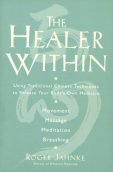
February 21, 2023
It is a perfect world, a world of consummate excellence, a world of supreme wonders, the ripest fruit in God’s garden, the master-thought of the universe. ~ Kahlil Gibran, “The Perfect World”
 I’ve found a book that seems to hold the secret to optimal health for everyone. It was published in 1997 and is still in print. This extraordinary longevity in the publishing world tells me all I need to know about the efficacy and veracity of the book’s information.
I’ve found a book that seems to hold the secret to optimal health for everyone. It was published in 1997 and is still in print. This extraordinary longevity in the publishing world tells me all I need to know about the efficacy and veracity of the book’s information.
I realize stating a book contains “the secret to optimal health for everyone“ is a hyperbolic generalization. What can I say? I believe in my heart that this is true.
I’ve been experiencing an unprecedented yearning to practice self-care, but except in the scattershot, unenthusiastic ways I’ve previously attempted, I didn’t quite know how to do that. After reading only part of it, I realized that this book is my “how.” A door opened, a light beckoned, and I walked through.
*****
 I’ve been on a quest to “fix“ the dysfunctional aspects of my physical self for a number of years. The long and winding road brought me to a way-stop that said: it’s all about committing to self-care.
I’ve been on a quest to “fix“ the dysfunctional aspects of my physical self for a number of years. The long and winding road brought me to a way-stop that said: it’s all about committing to self-care.
Self-care seems to be a practical and participatory aspect of self-love. Self-care is what can eventuate after we’ve come to a tipping point of self-love.
I don’t believe it’s necessary to 100% love ourselves, 100% of the time. Humans have bad moods, and in the midst of one, the predominant throughline is not going to be “I love myself so much!“
Initiating even one practice from this book can help ensure I have fewer bad moods and more good moods. Knowing that I’m loving myself in a practical way through a brief self-care activity vaporizes a bad mood and replaces it with, if not giddy happiness, at least a peaceful neutrality.
*****
 I am very foundational when it comes to what I want most. I want to be happier more often, and [fill in the negative mood] less often.
I am very foundational when it comes to what I want most. I want to be happier more often, and [fill in the negative mood] less often.
Looking at a teeter-totter, it only takes another ounce or two to tip it over the fulcrum. Dwelling even a smidge more in happiness than negativity saturates all the layers of my selves down to the heart and soul. I’d be very disappointed if my heart and soul didn’t fervently want happiness, light, joy, and freedom the same way “I” consciously do.
Since I’m still here, sidling toward enlightenment, I’m pretty sure my heart and soul agree that happiness in any of its aspects is an okey-dokey goal to put in our communal sights.
*****
 I’m not sure what happiness looks like in the fifth dimension. 3D happiness, like having a boisterous good time with friends and family, seems unlikely to translate verbatim to 5D. Perhaps happiness generated through self-care is a higher dimensional happiness we can currently experience, even while still bogged down in this pre-ascension version of Earth.
I’m not sure what happiness looks like in the fifth dimension. 3D happiness, like having a boisterous good time with friends and family, seems unlikely to translate verbatim to 5D. Perhaps happiness generated through self-care is a higher dimensional happiness we can currently experience, even while still bogged down in this pre-ascension version of Earth.
If that’s so, then stumbling across this book might indicate that 5D is pulling me toward it. Not long ago, I wouldn’t have had enough patience to slow down and absorb the book’s message, let alone be drawn to the practices. I’m curious about these Eastern-wisdom-inspired movement, massage, breathing, and meditation activities, and having tried a few, a sense of wonder has sweetened the power of curiosity.
This stuff works. And I want to do more of it. Unlike struggling mightily to fix what’s “wrong” with me, this feels like a celebration of what and who I already am, right this moment.
It makes me smile just to think about it. And thinking about it, I take a Remembering Breath. The book didn’t tell me to do so, but I also feel subtle gratitude for air, for lungs, for muscles to deepen the breath.
*****
Will this be another flash in the pan for me, like so many other methods and practices? Perhaps. I’m counting on my curiosity and a residual wonderment to keep drawing me back. Even doing one “remembering breath” a day can, in my estimation, constitute my practice. I don’t need to take classes, book appointments with a practitioner, or buy equipment, so my only investment is the cost of the book and my time.
Self-care is what we determine it to be. That may be one of the most liberating realizations anyone can have.

“The Remembering Breath,“ p. 89, The Healer Within, Using traditional Chinese techniques to release your body’s own medicine, by Roger Jahnke, Doctor of Oriental Medicine. From the book jacket: “With this revolutionary guide, you will learn four simple and remarkably effective techniques to release your natural powers for healing. The methods—gentle movement, self-applied massage, breathing exercises, and meditation—are drawn from the ancient Chinese healing system of Qigong and are easily adaptable to every lifestyle. You can practice them almost anywhere…Using these methods for as little as ten minutes a day can dramatically increase your endurance, vitality, and longevity. Self-care has never been so easy!“
(See healerwithin.com)

